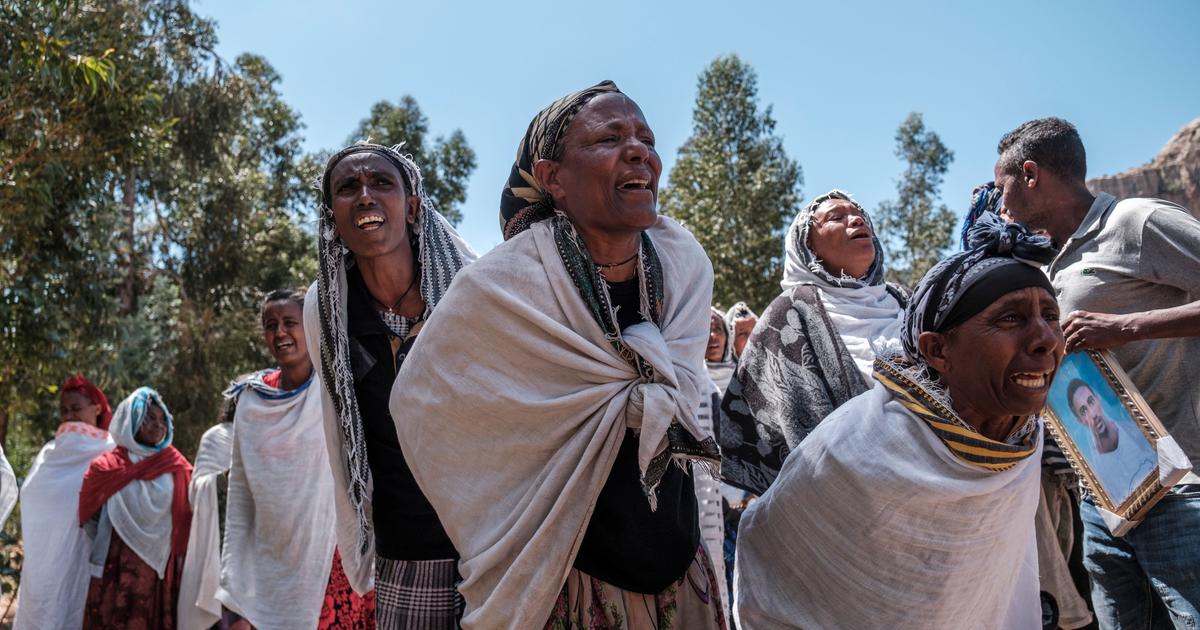United Nations UN humanitarian chief Mark Lowcock warned on Thursday that a ‘destruction campaign’ was taking place The province of Tigray in Ethiopiaand said at least 4.5 million people need help and demand that the troops of neighboring Eritrea accused of committing atrocities in Tigray leave Ethiopia.
As the Tigray crisis enters its fourth month, Lowcock said, the humanitarian crisis has worsened and ‘multiple credible and widely substantiated reports of Tigray … speak of brutal atrocities, which include mass murders, rapes and kidnappings of civilians, ongoing fighting in the whole region “as well as the destruction of crops and important agricultural machinery.
EDUARDO SOTERAS / AFP / Getty
Lowcock’s remarks at a closed session of the UN Security Council, obtained by CBS News, for the first time singled out Eritrean forces as fighting on the side of the Ethiopian government, and warned of possible famine “if food does not come through and there is no agricultural revival. ‘
Ambassador Linda Thomas-Greenfield said the US had sent a “disaster relief team to Ethiopia”, reports Pamela Falk, CBS News. The US ambassador called on the Ethiopian government to support an immediate end to the fighting in Tigray and called on Lowcock’s to support the immediate withdrawal of Eritrean forces and Amhara regional forces.
UN spokesman Stephane Dujarric said United Nations Secretary-General Antonio Guterres also supported Lowcock’s demand.
A press release from the Security Council on Tigray, drawn up by Ireland, is still being discussed, council diplomats said on condition of anonymity as the meeting closed.
While fierce fighting is believed to continue between Ethiopian and allied forces and those supporting the now fleeing Tigray leaders who once dominated the Ethiopian government, the alarm is rising over the fate of 6 million people from Tigray. No one knows how many thousands of civilians were killed.
The reports of atrocities against Tigray residents were set out in reports by The Associated Press and Amnesty International. Federal government and Tigray regional officials believe each other’s governments are illegal after elections disrupted by the COVID-19 pandemic.
In the demand that the Eritreans leave, Lowcock said: “It is now clear to everyone and openly acknowledged by government administration officials in Tigray that Eritrean army is operating throughout Tigray.”
“Numerous well-supported reports indicate that they are guilty of atrocities,” he said. “Eritrean army must leave Ethiopia and they may not be allowed to continue their campaign of destruction before doing so.”
EDUARDO SOTERAS / AFP / Getty
Lowcock also stressed that all forces – “and here I include the Ethiopian army, the Eritrean army, the Tigraian forces and ethnic civilians from parts of Ethiopia beyond Tigray” – must grant access to people in need under international humanitarian law, “wherever it may be.”
He said many people in rural areas, who made up about 80% of Tigray’s population, remained inaccessible before the start of the conflict and that their situation was “almost certainly worse” than those who could reach aid agencies.
“We have identified at least 600,000 people who we know need help but who have not yet received humanitarian aid,” Lowcock said. “But we suspect that the actual number of people in need who have not received any assistance so far is significantly higher.”
With the crops and markets disrupted by the conflict, he said ‘food security is increasing’, calling ‘anecdotal reports of hunger’, but ‘the worst is still avoidable’.
Lowcock said aid agencies are stepping up their response and are urging donors to contribute to a $ 400 million call for Tigray to be released next week.
INTERNATIONAL COMMITTEE OF THE RED CROSS / Reuters
The UN humanitarian chief said Ethiopian Prime Minister Abiy Ahmed had told Secretary-General Guterres a few days ago – and on Thursday told World Food Program Executive Director David Beasley – that he was committed to ensure that help reaches those who need it.
“This commitment must now be translated into more on-the-spot action,” Lowcock said, emphasizing that one urgent need is to get communications equipment into Tigray so that aid agencies can communicate with each other.
Lowcock said Tigray may not be the only hotspot in Ethiopia.
“We are seeing warning signs in other regions of Ethiopia, including a military build-up on the border between Ethiopia and Sudan and the deteriorating ethnic conflict in the Benishangul-Gumuz region, from where refugees are fleeing to Sudan,” he said.



